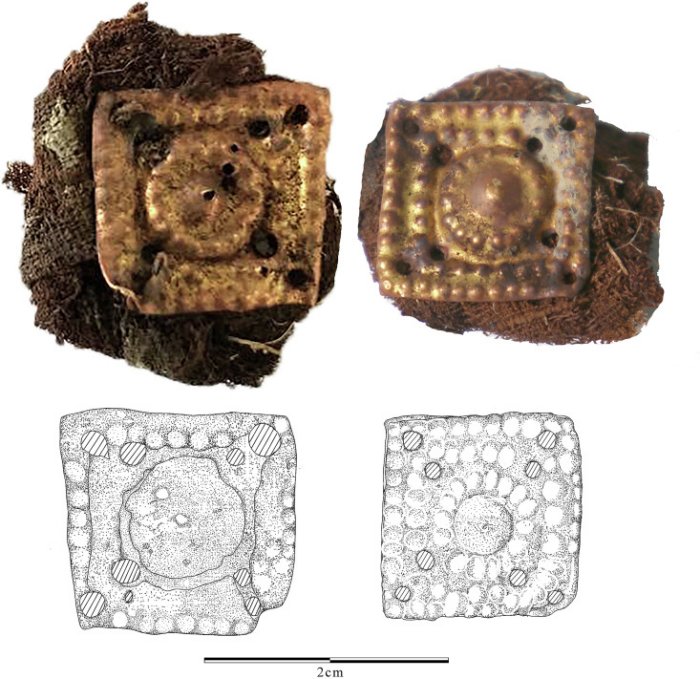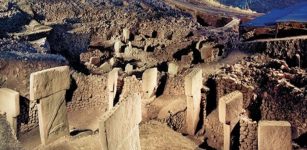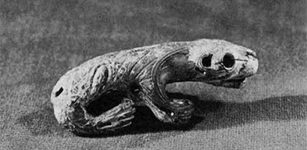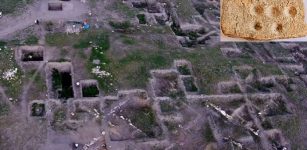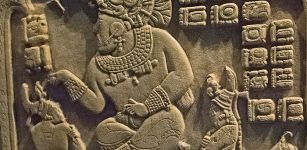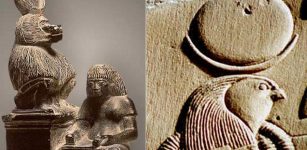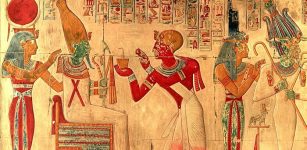Why Was An Ancient High-Ranking Woman Buried Within The Abandoned Khar Nuur Fortress, Mongolia?
Conny Waters - AncientPages.com - The recent archaeological discovery in Dornod Province, Mongolia, has yielded significant historical insights. During an excavation, an elite grave from the pre-Mongol period, specifically the Khitan Empire era, was unexpectedly unearthed. This burial, now called the Khar Nuur burial, was found within the confines of an abandoned Kitan-era frontier fortress.
The location of the discovered grave in the northeastern region of Mongolia. Credit: Amartuvshin Chunag et al.
The grave contains the remains of a woman estimated to be between 40 and 60 years old. She was dressed in yellow silk and wore a birchbark headdress. Scientific analysis suggests she belonged to a prestigious lineage with considerable political influence.
The female subject showed signs of osteoarthritis and tooth loss, suggesting dietary issues in later life. She was buried in a wooden coffin, likely larch or pine, facing northeast and wrapped in bark. Valuable nearby artifacts indicate high social status, including bronze and iron items, beads, and gold and silver jewelry. These suggest trade networks with regions like northern China and Manchuria under Jurchen Jin rule.
Credit: Adobe Stock - Vibes 16:9
A unique small bronze vessel with geometric patterns was discovered, lacking clear parallels in medieval Mongolian artifacts. Additionally, fragments of a leather-covered, bronze-framed wooden object were found, possibly a quiver or bow case typically associated with elite male burials from the Mongol imperial period.
A plan of the excavated grave at Khar Nuur, Cluster 27. Credit: Amartuvshin Chunag et al.
Interestingly, the tomb's construction appears to postdate the fortress's use, indicating a repurposing of space during a period of political transition.
The excavation site, Cluster 27, is approximately 1.4 km west of Lake Khar Nuur. It consists of a large circular structure encompassing a smaller rectangular enclosure. Archaeologists discovered the well-preserved tomb in the outer wall of this enclosure and have dated it to between 1158 and 1214 A.D.
This finding is particularly noteworthy as it bridges the gap between the collapse of the Khitan Empire in 1125 and the rise of the Mongol Empire under Genghis Khan in 1206. The tomb's contents, including a wooden coffin and valuable objects, provide valuable information about the time's material culture and social structures.
An object made of bark was found near the lower right leg of the deceased. Credit: Amartuvshin Chunag et al.
The Khar Nuur burial offers crucial insights into the local communities, networks, and organizations during the 12th century CE. This period was characterized by post-imperial destabilization and intense political competition, making this discovery essential to our understanding of the region's history during this transitional era.
Multiple hypotheses have been proposed to elucidate the selection of the burial site. It is suggested that the Khar Nuur steppe nomads may have regarded the abandoned Kitan fortress as an integral component of their historical heritage and Indigenous domain, utilizing it to reinforce local identity and collective memory.
The fortress presumably held significant symbolic prestige, rendering it an appropriate location for the interment of a prominent community member.
Two golden ornaments, one retaining its textile backing. Credit: Amartuvshin Chunag et al.
Furthermore, the burial may have served as a calculated demonstration of authority and territorial claim within the context of the period's political rivalries.
The discovery adds a vital piece to the puzzle of Mongolian history, providing a deeper understanding of the events and communities that shaped the region before the rise of the Mongol Empire. It offers valuable insights into how local communities maintained their networks and organizations during significant change and political competition.
See also: More Archaeology News
"The Khar Nuur burial represents a unique window into the complex social and political landscape of 12th century Mongolia," said Professor Shelach-Lavi from the Hebrew University of Jerusalem.
"It demonstrates how local elites may have used symbolic connections to past empires to legitimize their own power and status, even as they navigated a rapidly changing political environment."
The study was published in the journal Archaeological Research in Asia
Written by Conny Waters - AncientPages.com Staff Writer





